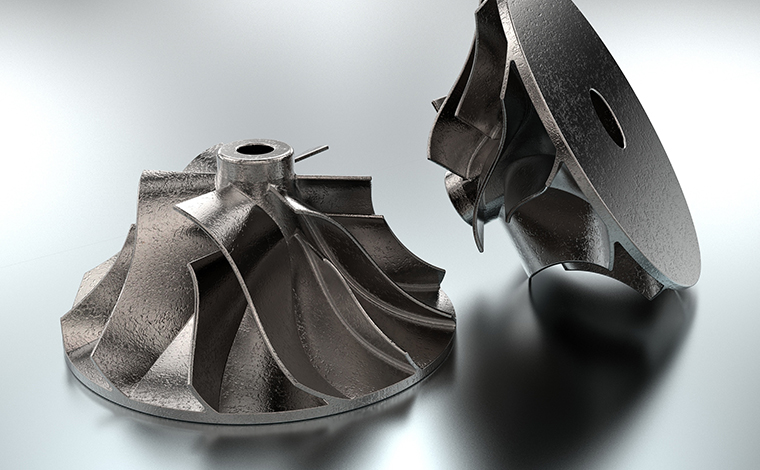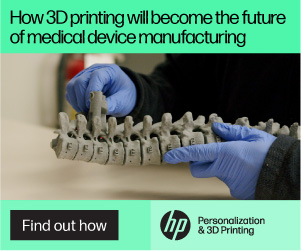
According to the American Society of Quality, a Quality Management System (QMS) is defined as “a formalized system that documents processes, procedures, and responsibilities for achieving quality and regulatory policies and objectives.” A key objective of a QMS is to improve the organization’s effectiveness and efficiency on a continuous basis, especially when it comes to meeting customer expectations, provisioning products and services efficiently, and creating space for growth, profitability and employee retention.
The long history of quality suggests that, to be efficient and effective, quality must be built into a product. As Harold S. Dodge said many years ago, “You cannot inspect quality into a product. The quality is there or it isn’t by the time it’s inspected.” The imperative to switch from inspection to built-in quality can be aided by the successful implementation and deployment of a QMS can be a strong differentiator for any organization involved with additive manufacturing (AM), from individual parts producers to the entire industry.
How AM Laser Powder Bed Fusion Supports Quality
Metal Laser Powder Bed Fusion (LPBF) is an additive manufacturing technique that utilizes a high-power laser driven through a layer of a shallow bed of metal powder to generate a melt pool plume system in specific patterns to melt and solidify the molten powder layer-by-layer into three-dimensional metal geometries. The technology can offer lower costs and faster cycle times for complex designs when compared to traditional manufacturing methods, especially for difficult-to-machine materials.
In addition, there are many products that can be additively manufactured to exacting strength-to-weight design requirements that are impossible to manufacture using traditional methods. Although the technology has been around for some time, additive manufacturing is still an early-stage but rapidly growing market. Many organizations in diverse industries are working to understand LPBF and incorporate the technology into their manufacturing processes.
Although the LPBF process is conceptually rather simple, the underlying physics and metallurgy are very complex and cover a large range of time and length scales. Powder layer thicknesses and laser beams are on the order of tens of microns; laser speeds are on the order of one meter per second. Parts are many cubic centimeters in dimension and build times can be many hours, even days. Additionally, there are literally hundreds of important input variables in modern metal additive manufacturing processes, all of which could result in deviations from expected product performance when allowed to significantly diverge from nominal settings.
From ab initio physics, chemistry, or metallurgy standpoints, few (if any) variables are more important than temperature. The melt pool plume system is a complex, dynamical, nonlinear system with feedback that operates far from equilibrium. Applied temperature and temperature derivatives control melting, solidifying, plume formation, tensile and shear strength, metal crystal formation, defect formation, and many other components directly related to final product quality, although reliable models of that control continue to be proven elusive.
An enlightened metal AM organization can set an objective like: “producing high-quality parts repeatedly with high confidence and minimum waste.” The industry currently spends a large amount of money, time, and effort on the qualification and inspections of final products. Unfortunately, many qualification protocols are onerous and expensive and the lack of repeatability with high confidence forces a reliance on 100% final inspections, often using expensive computerized tomography (CT) equipment.
This is why Sigma Labs pioneered the in-process quality assurance (IPQA) industry. The company’s PrintRite3D® in-process quality assurance solution uses Bichromatic Pyrometry to measure the temperature of the melt pool plume system and improve AM work processes. The system enables important QMS benefits, including:
- Improved economics due to early problem detection: Long builds can be interrupted to fix defined process problems.
- Process knowledge and innovation: In-process metrics lead to process-to-product quality knowledge and innovation.
- Yield improvement: Building quality into a product increases its final yield (good parts manufactured/all parts manufactured). (IPQA®)
- Cycle time improvement: The time required to manufacture a part can be lowered significantly by detecting process problems early, improving process interarrival times and variability.
- Service/delivery predictability: Better yield and cycle time performance leads to improved predictability.
- Waste reduction: PrintRite3D facilitates the understanding and minimization of waste by detecting anomalies that cause defects and eliminating overprocessing caused by 100% final inspection.
The metal additive manufacturing industry could learn a great deal from the history of quality management systems, and speed adoption of 3D metal applications with successful implementation and deployment of in-process quality assurance solutions. For more information, please visit www.sigmalabsinc.com/resources.
Subscribe to Our Email Newsletter
Stay up-to-date on all the latest news from the 3D printing industry and receive information and offers from third party vendors.
You May Also Like
Why Corrosive Resistant Materials Are Important to the Success of 3D Printing Across Industries
The adoption of additive manufacturing (AM) is accelerating across many major industries. As this technological shift unfolds, the importance of corrosion resistance has emerged as a challenge for 3D printing...
America Makes Announces IMPACT 2.0: $6.6M in New 3D Printing Funding
America Makes, the Manufacturing Innovation Institute (MII) based in Youngstown, Ohio, has announced IMPACT (Improvement in Manufacturing Productivity via Additive Capabilities and Techno-Economic Analysis) 2.0, a project call which will...
3D Printing Webinar and Event Roundup: April 14, 2024
We’re starting off the week’s 3D printing webinars and events at ASTM AMCOE’s 11th Snapshot Workshop and MACH Exhibition. Stratasys continues its advanced training courses, SME is holding a virtual...
AMUK Welcomes Airframe Designs as British 3D Printing Industry Grows
While the UK is not the hub for 3D printer and materials manufacturers as other nations, the country continues to excel at the research, development, and application of additive manufacturing...

































